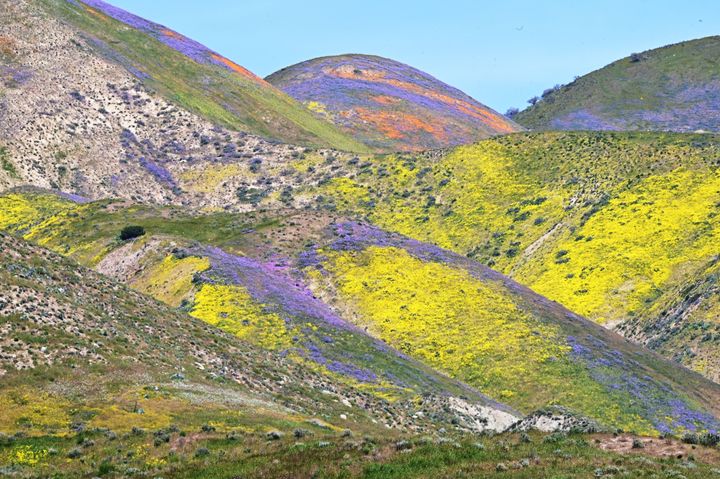
Conservation and ecosystem restoration will now get the same consideration as oil drilling, logging and grazing from America’s largest land manager, according to a final rule published Thursday.
The Bureau of Land Management’s final Public Lands Rule, first proposed last year, confronts the agency’s long legacy of prioritizing extraction on federal lands that every American shares an equal stake in.
“As stewards of America’s public lands, the Interior Department takes seriously our role in helping bolster landscape resilience in the face of worsening climate impacts,” Interior Secretary Deb Haaland said in a statement. “Today’s final rule helps restore balance to our public lands as we continue using the best-available science to restore habitats, guide strategic and responsible development, and sustain our public lands for generations to come.”
The rule directs BLM — the nation’s largest land manager — to “protect intact landscapes, restore degraded habitat, and make wise management decisions based on science and data.” The agency will also be tasked with incorporating land health assessments into its decisions about how lands are used.
The biggest change from when the rule was first put forward last year deals with a new tool established to promote land protection and ecosystem restoration. The concept was initially floated as a system of broader “conservation leases,” but the BLM ultimately opted for establishing separate “restoration leases” and “mitigation leases.” Restoration leases will be available to individuals, organizations and state agencies interested in improving or recovering public lands, while mitigation leases are specifically for offsetting impacts from development or use of other lands.
The new leases will not bar public access, with the exception of temporary restrictions during restoration activities, and “will not override valid existing rights,” according to the rule.
The new rule will also make it easier for BLM to designate “areas of critical environmental concern,” allowing the agency to preserve more of its holdings as wilderness-like areas by discouraging extractive use or the construction of new roads. The agency can use the designation to promote both landscape protection and habitat connectivity, which is critical for wildlife.
The changes could have sweeping effects on an agency long derided by environmentalists as the “Bureau of Livestock and Mining.”
Some 90% of BLM’s holdings remained open to leasing from the oil and gas industries as of 2022, according to a report by the Center for American Progress. And compared to other major federal land agencies, far less of BLM’s acreage enjoys protections designed to shield its natural resources.
“This rule honors our obligation to current and future generations to help ensure our public lands and waters remain healthy amid growing pressures and change,” BLM Director Tracy Stone-Manning said in a statement.
Environmental groups and public land advocates called the final rule long overdue.
“For too long, the BLM has allowed extractive industries to have their way with our public lands,” Kate Groetzinger, communications manager for the Center for Western Priorities, said in a statement. “That’s led to degraded landscapes across the West and the decline of iconic species, like the greater sage-grouse. This rule gives the BLM the tools it needs to right these wrongs and start improving the health of our public lands.”
Jamie Williams, president of The Wilderness Society, called it “a generation-defining shift in how we manage our shared natural resources.”
Conservation groups have charged the BLM with failing to uphold its mission to “sustain the health, diversity, and productivity of America’s public lands for the use and enjoyment of present and future generations.”
Despite that clear mandate, fossil-fuel-allied Republicans have condemned BLM’s plan, arguing that the effort actually undermines the agency’s multiple use mandate and stoking fear that it threatens to devastate western communities.
In a statement Thursday, Sen. John Barrasso (R-Wyo.), the ranking member of the Senate Committee on Energy and Natural Resources who has raked in more than $1.6 million in oil and gas industry campaign contributions over his career, promised to introduce a Congressional Review Act resolution to “repeal this outrageous rule.”
“The people of Wyoming depend on access to public lands for their livelihoods — including energy and mineral production, grazing, and recreation,” he said. “With this rule, President Biden is allowing federal bureaucrats to destroy our way of life.”
Thursday’s rule comes less than a week after the Interior Department overhauled its long-outdated oil and gas leasing program, significantly increasing how much energy companies must pay to lease and drill on federal lands.